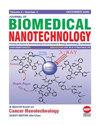壳聚糖纳米颗粒作为新一代黑色素瘤药物载体的研究进展
IF 2.9
4区 医学
Q1 Medicine
引用次数: 0
摘要
黑色素瘤是最致命的皮肤癌之一,约占美国所有确诊皮肤癌病例的1%。转移性黑色素瘤对常规治疗具有高度的耐药性,并且这种疾病是高度难治性的。因此,开发新的治疗策略至关重要。目前治疗黑色素瘤的给药系统存在脱靶、循环时间短、毒副作用、需要反复给药等缺点。为了应对这些挑战,聚合纳米粒子为黑色素瘤治疗开辟了新的领域。在不同的候选材料中,壳聚糖基纳米颗粒(ChNPs)得到了极大的关注。由于其优异的生物相容性、非免疫原性、多功能、高稳定性和低成本,对这些载体的治疗吸引力正在上升。本文将讨论ChNPs在黑色素瘤治疗中的最新进展、应用和挑战。本文章由计算机程序翻译,如有差异,请以英文原文为准。
Chitosan Nanoparticles as Next Generation of Drug Carriers for Melanoma Treatment: A Review
Melanoma is one of the deadliest forms of skin cancer which accounts for about 1% of all diagnosed skin cancer cases in the United States. Metastatic melanoma is highly resistant to conventional treatments and the disease is highly refractory. Therefore, the development of new treatment strategies is crucial. The current drug delivery systems for melanoma therapy have certain disadvantages such as off-target drug delivery, low circulation time, toxic side effects, and the need for repeated drug administration. To address these challenges, polymeric nanoparticles have broken new grounds for melanoma treatment. Among different candidates, chitosan-based nanoparticles (ChNPs) have gained significant attention. Due to their excellent biocompatibility, non-immunogenicity, versatile properties, high stability, and low cost, therapeutic appeal towards these carriers is on the rise. In the current review, recent progress, applications, and challenges of ChNPs in melanoma treatment will be discussed.
求助全文
通过发布文献求助,成功后即可免费获取论文全文。
去求助
来源期刊
CiteScore
4.30
自引率
17.20%
发文量
145
审稿时长
2.3 months
期刊介绍:
Information not localized

 求助内容:
求助内容: 应助结果提醒方式:
应助结果提醒方式:


